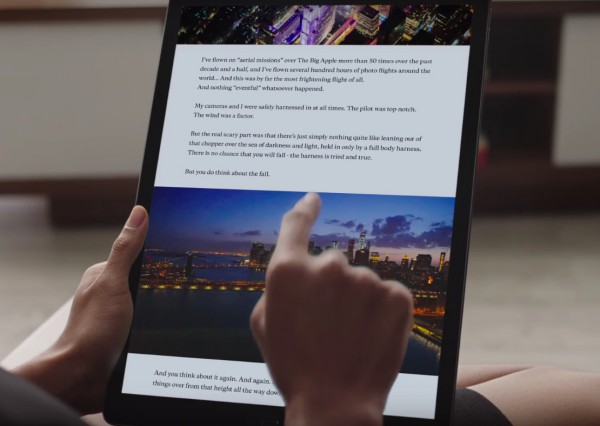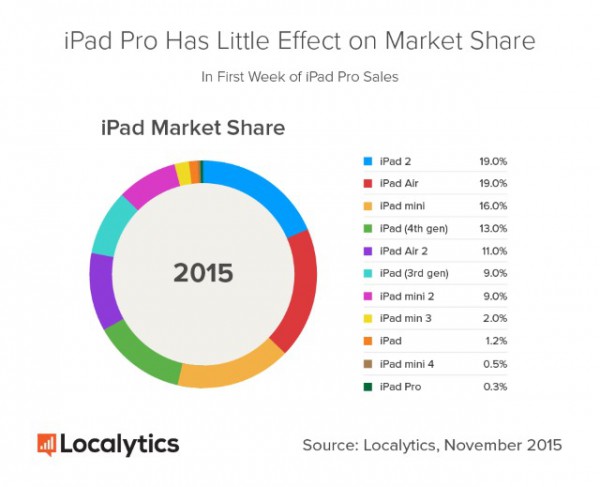
With the level of excitement that surrounded the launch of the iPad Pro, it would be reasonable to expect sales to be high. They're not. Adoption of this particular model are the slowest for any iPad version yet.
It may only be a week since launch, but Apple would almost certainly be hoping that the new Pro version of its tablet would have captured more than 0.3 percent of the iPad market. Not even the tablet market, just iPads. Experts suggest that part of the reason for this is confusion about who the iPad Pro is aimed at.
Compare the launch of the iPad Pro with the first and second generation Air models. The iPad Air captured more than six times the market share than the Pro version in the same time frame. The iPad Air 2 proved slightly less popular, but still enjoyed a first week adoption rate more than three times that of the iPad Pro.
In fact, since the launch of the iPad Pro, the two Airs have seen a jump in sales -- thanks in part to the price drops that follow any new launch.
Research by Localytics shows that the iPad 2 and iPad Air still dominate, and the new kid on the block has quite some catching up to do:

Localytics suggests that part of the reason for the slower adoption is competition from PCs, and a need for apps to evolve.
CEO Tim Cook has positioned the iPad Pro as a replacement for PCs, so the competition is not actually with other iPads but more so with laptops and desktops. The idea of an iPad taking the place of a laptop may take some convincing due to the fact the iPad Pro runs on iOS as opposed to the traditional laptop system OS X. While iOS offers many great features, it does not have the access to full-featured applications that OS X does, which will call for adjustments on the user’s side. Apple's best chance to bridge this gap is to leverage the App Store and highlight apps focused on productivity and improving the workplace experience, as we'll see next.

